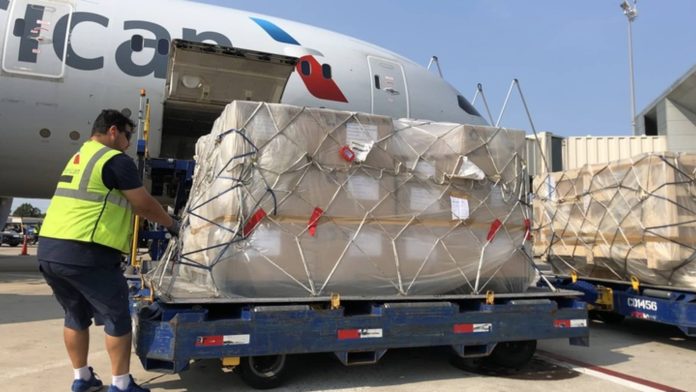The International Air Transport Association (IATA) has released data for the full year 2024 and December 2024, highlighting a strong performance in the global air cargo market. The report reveals an 11.3% increase in full-year demand, measured in cargo tonne-kilometers (CTK), compared to 2023, with international operations experiencing an even greater rise of 12.2%. This growth surpassed the record volumes set in 2021, marking a significant milestone for the industry. Capacity, measured in available cargo tonne-kilometers (ACTK), also expanded by 7.4% year-on-year, with international capacity increasing by 9.6%.
Despite an overall positive trend, full-year cargo yields declined by 1.6% compared to 2023. However, they remained 39% higher than pre-pandemic levels in 2019, indicating that air cargo continues to command strong pricing power. December 2024 closed the year on a high note, with global demand rising 6.1% from December 2023 levels, while international operations saw a 7.0% increase. Capacity in December was 3.7% higher than the previous year, with international operations growing by 5.2%. Cargo yields in December rose by 6.6% compared to the same period in 2023, and were a remarkable 53.4% higher than in December 2019.
IATA’s Director General, Willie Walsh, acknowledged the outstanding performance of the air cargo industry in 2024, noting that it was a year of profitable growth. He attributed the strong demand to increased e-commerce activity, constraints in ocean shipping, and airspace restrictions that limited capacity on some key long-haul routes to Asia. These factors helped keep yields at exceptionally high levels despite a continued softening from the peaks of 2021 and 2022. Walsh highlighted that while yields have adjusted, they still reflect a significantly stronger market than pre-pandemic years.
Looking ahead to 2025, IATA projects that growth will moderate to 5.8%, aligning with historical averages. Walsh emphasized that economic indicators remain supportive of a strong year for air cargo, with oil prices on a downward trajectory and trade activity continuing to expand. However, he also warned of potential challenges, particularly in adapting to shifting geopolitical conditions. The first week of the Trump administration in the United States has signaled an inclination toward aggressive tariff policies, which could have a mixed impact on the air cargo sector by fueling inflation while simultaneously dampening trade volumes.
The broader operating environment in 2024 saw global trade in goods grow by 3.6% annually. However, December data indicated a slowdown in manufacturing activity, as reflected in the Purchasing Managers Index (PMI). The manufacturing output PMI stood at 49.2, while the new export orders PMI was at 48.2, both below the critical 50-point threshold that signals expansion. Inflation remained a mixed factor, with US headline inflation rising by 0.2 percentage points to 2.9% in December. The European Union also experienced an increase in inflation, climbing to 2.7%, while China’s consumer inflation fell by 0.1 percentage points to 0.1%, marking the fourth consecutive year-on-year decline and raising concerns about an economic slowdown in the region.
Regional performance in 2024 varied, with Asia-Pacific airlines leading the industry with 14.5% year-on-year demand growth. Capacity in the region expanded by 11.3%. December results showed an 8.4% increase in demand, while capacity grew by 6.3%. North American carriers recorded the lowest growth among all regions, with a 6.6% rise in demand and a 3.4% increase in capacity. December figures reflected a 5.3% demand growth and a 2.1% rise in capacity. European airlines saw an 11.2% increase in demand throughout the year, accompanied by a 7.8% rise in capacity. December performance showed a 5.1% rise in demand and a 3.7% increase in capacity.
Middle Eastern carriers recorded a 13% increase in annual demand, with capacity growing by 5.5%. However, December saw a slower pace of growth, with demand rising by 3.3% and capacity increasing by only 0.2%. Latin American carriers experienced a 12.6% increase in demand in 2024, with capacity expanding by 7.9%. December demand surged by 10.9%, the highest of all regions, while capacity increased by 8.4%. African airlines posted an 8.5% annual demand growth, but capacity outpaced demand with a 13.6% increase. December was a challenging month for the region, as demand declined by 0.9%, the lowest performance among all regions, while capacity still rose by 1.8%.
Trade lane growth remained robust, with international routes witnessing exceptionally high traffic levels for the 17th consecutive month. In December, these routes experienced a 7% year-on-year increase in demand. Airlines continued to benefit from rising e-commerce demand in the US and Europe, driven by persistent capacity constraints in ocean shipping.
As air cargo enters 2025, the industry faces a mix of opportunities and challenges. While demand remains strong and economic fundamentals are supportive, the potential impact of global trade policies and inflationary pressures could influence the trajectory of growth. Nevertheless, with record-breaking volumes achieved in 2024, the industry remains on a solid footing as it adapts to evolving market dynamics.













